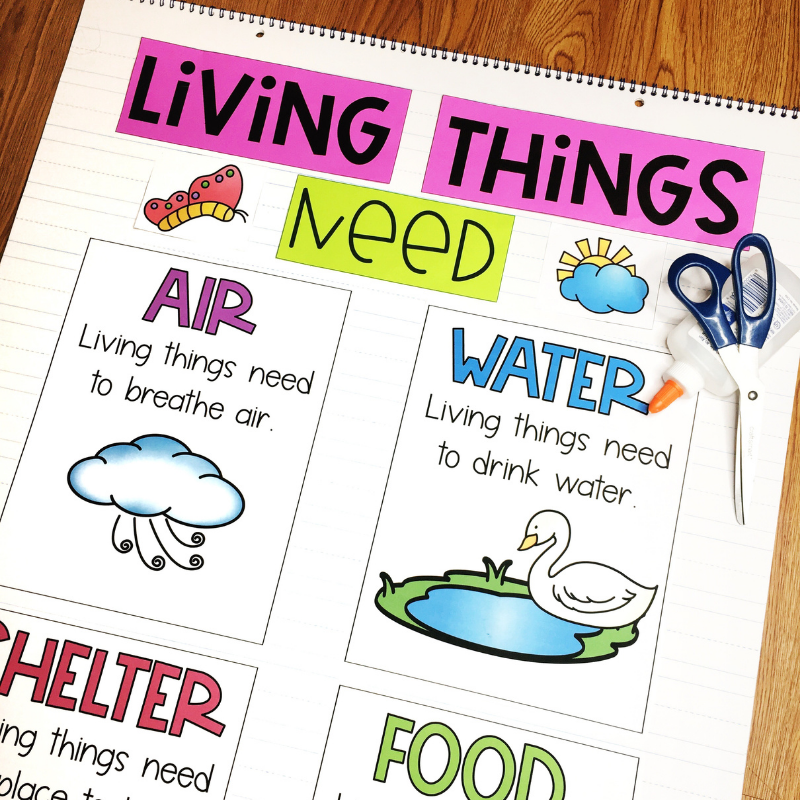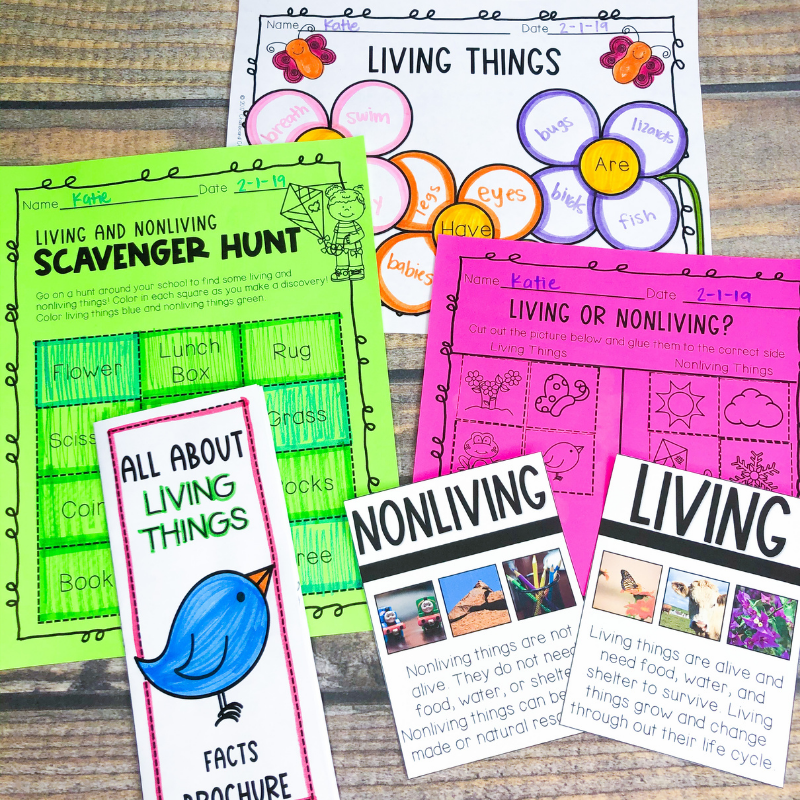4 New Activities for Your Living and Nonliving Things Unit
If you’re tired of doing the same old science lessons and, you’re looking for new high-interest activities to add to your next science unit. These 4 living thing activities and anchor charts are great for keeping the engagement strong throughout your whole unit. After reading, you’ll learn how to use:
Digital living and nonliving thing activities
No prep anchor charts
Living and nonliving thing books
Living Thing Anchor Charts
No science lesson is complete without the proper anchor chart. Help your students understand the characteristics of living and nonliving things with bright and colorful pictures. You can save time by printing premade anchor charts and building them with your students.
You can also share a digital version of each class anchor chart with your students through Google Classroom. My students are able to personalize each anchor chart in their own words to help further their understanding.
Living and Nonliving Thing Scavenger Hunt
Studying living and nonliving things give you the perfect excuse to get outside and explore! So, get your science notebooks ready to go on a scavenger hunt around the classroom and outside your school! My students loved walking around to find different living things like flowers and bugs. They also looked for nonliving things like rocks and scissors.
Living and Nonliving Things Research
We use Brain Pop Jr. to research and find out even more about the characteristics of living things. If you don’t have a subscription to Brain Pop, you can use some of my favorite books for your research. I like the books What’s Alive? and Are You Living? I love these books because they are simple and help students understand the characteristics that help you decide if something is living or nonliving. PBS Learning Media has a great video called Is it Alive? After watching the short video, have a class discussion with your students to answer questions like:
What do living things need to survive?
What are characteristics of living things?
What are characteristics of nonliving things?
What are some examples of living and nonliving things?
Living Thing Crafts
Brighten up your classroom with cute living thing crafts. My students practiced identifying the characteristics that help determine if something is alive or not. They built and labeled a caterpillar with things that the caterpillar needs to survive. We had a discussion about how we know that insects are living things. Students added the labels for food, water, and shelter to show that those are some necessities of a living thing.
Keep your students engaged and wanting to learn more using these 4 science activities. Your students will love completing the variety of activities.
create anchor charts to show characteristics of living and nonliving things
create to show what living things need to survive
Want to try this later? Save these Living and Nonliving Thing Activities to your favorite Pinterest board.









